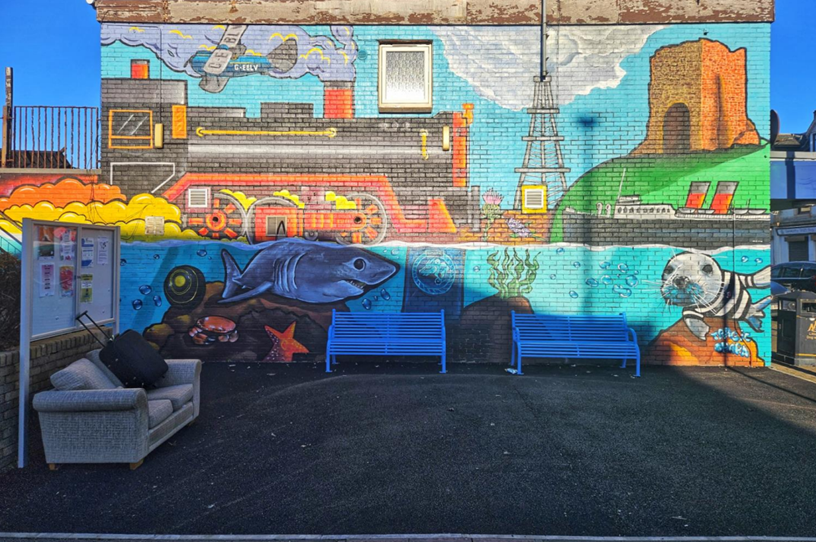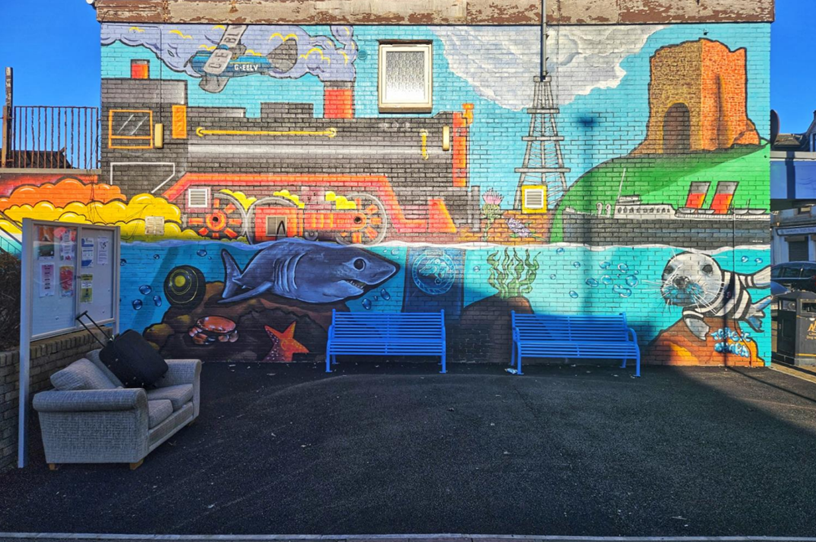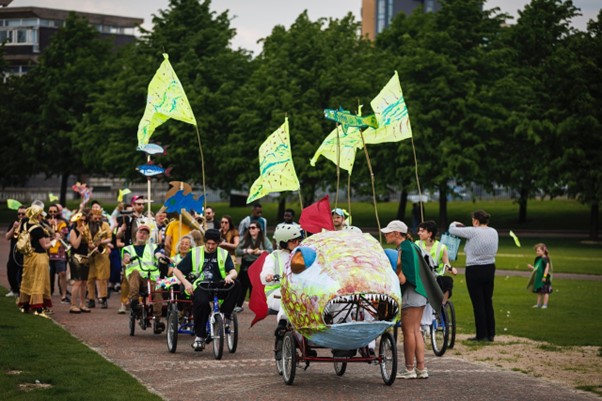The ‘Arbroath Accessible Design Qualitative Research’ report presents findings from in-depth interviews and focus groups carried out by Sustrans’ Research and Monitoring Unit.
The research forms part of a project evaluating the impact of the ‘Arbroath, A Place for Everyone’ redevelopment in the Scottish coastal town Arbroath.
About the infrastructure project
The ‘Arbroath, A Place for Everyone’ scheme is considered a ‘once in a lifetime transformational project’ for the town, which will unlock active travel potential and considerably enhance accessibility and liveability throughout the town.
The redevelopment will reallocate road space from the existing dual carriageway and creating a 1.5km active travel corridor. It will capitalise on the town’s seafront and historic assets and bring green infrastructure into the centre of town with the creation of safe and connected active travel links and public areas.
The scheme is being funded predominantly by the Scottish Government through Sustrans’ Places for Everyone programme.
Construction commenced in April 2024 and is projected to complete in Autumn 2025.
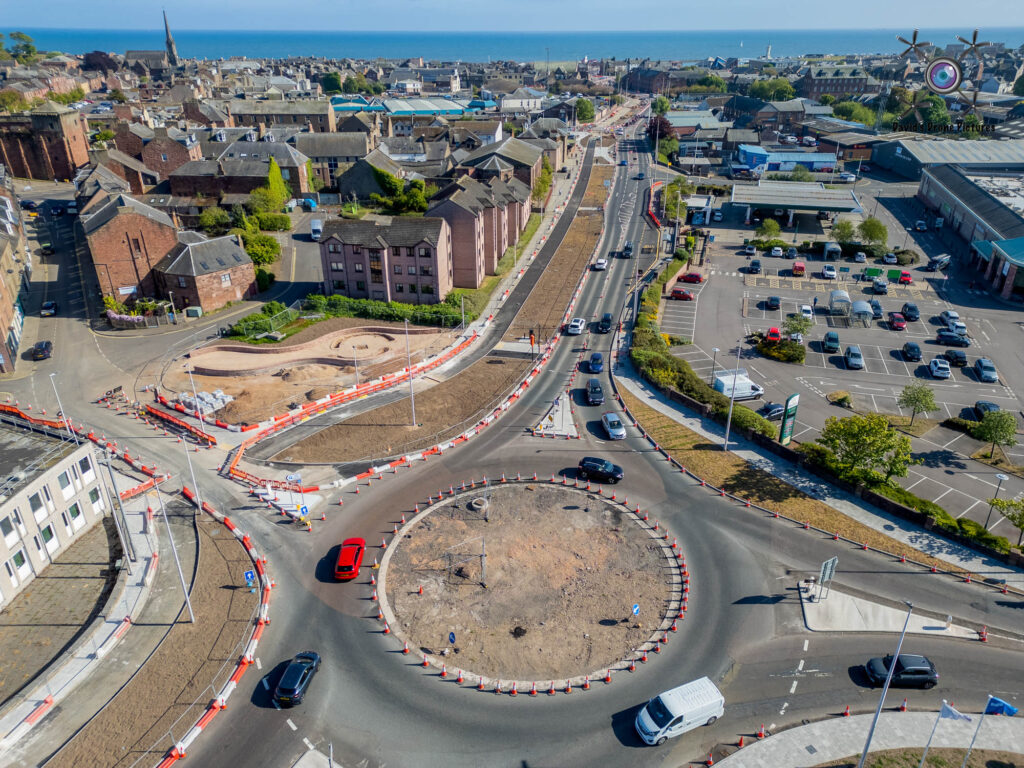
Credit: David’s Drone Pictures
Highlights from the research
The research (carried out prior to construction) underlines the need for transformations to Arbroath’s built environment in favour of inclusive and liveable spaces and travel options.
While the findings are of particular relevance to Arbroath, the themes and recommendations are of transferable interest. Overall, the discussions emphasise how low-quality or poorly designed and maintained pedestrian infrastructure disproportionately impacts disabled people if not up to standard.
Other key issues experienced in Arbroath by participants were:
- Crossing the four-lane dual carriageway (and other roads) is currently a dangerous and anxiety-inducing experience for many. Participants felt there was a lack of controlled crossings and that those which exist do not have sufficient audio support or crossing time window.
- The proximity, speed and high volumes of vehicles makes active travel feel unsafe and unpleasant.
- The pavement quality can be poor and often renders walking and wheeling uncomfortable. Having surfaces which are even and with greater visual contrast would benefit all, and addressing insufficient widths and availability of clutter-free pavement space would particularly benefit wheelchair/mobility scooter users, or those walking with aid.
- High-quality public spaces would hugely enhance the attractiveness of active travel for the disabled community as well as the viability of these journeys. Places to sit and rest, accessible public toilets and greenery are top priorities.
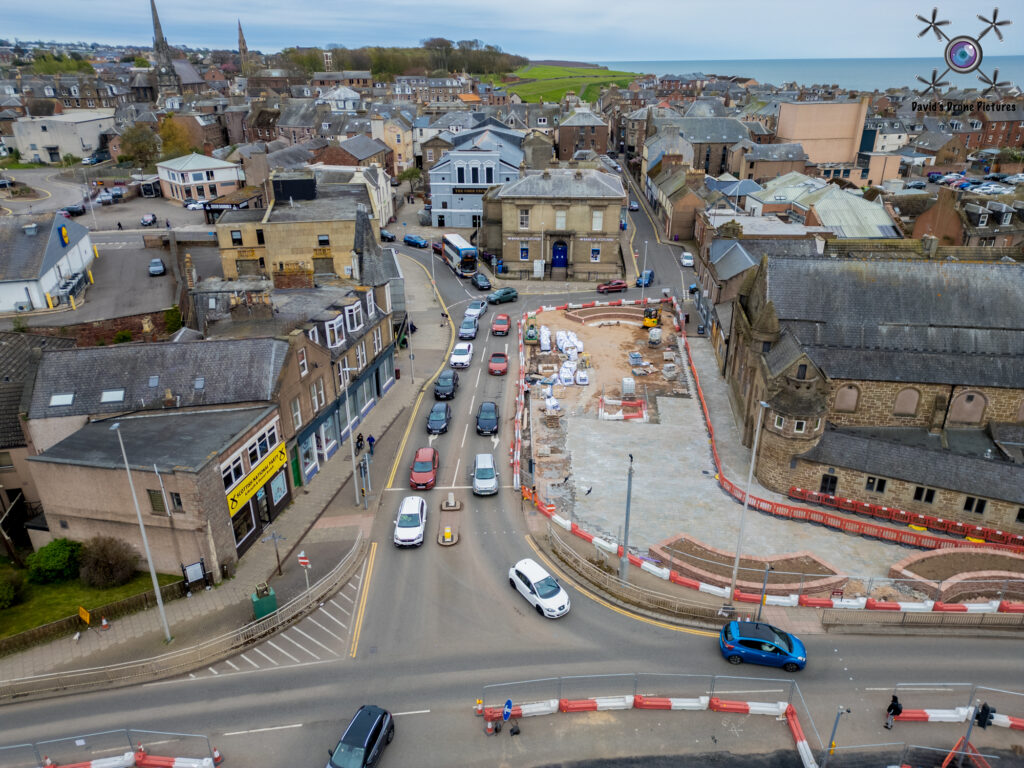
Credit: David’s Drone Pictures
Key quotations from participants:
“Some of the dropped kerbs, they’re not dropped kerbs, they’re quite big, chunky things.”
“it was just a case of take your chance. Busy road, cars going fast, you have to be careful with those crossing – they really could do with traffic lights on them.”
“It would look nicer without the railings [between pavement and carriageway] ‘cause you do feel hemmed in but you’re hemmed in for safety reasons”.
Further information about the research
The research was carried out in 2022 in the context of Sustrans’ RMU’s baseline evaluation for the infrastructure scheme. We sought to understand the pre-construction status-quo, so that in the future (post construction) we will be able to assess the impact this scheme has and the contribution of projects such as this to the objectives of the Places for Everyone programme.
We used our newly developed (2022) ‘accessible design focus group and interview method’ for understanding the current accessibility of infrastructure within Arbroath from the perspective of disabled people.
This engagement method allowed us to capture perspectives from people with a variety of disabilities and health conditions. This included participants who were wheelchair users or with reduced mobility, participants living with sight or hearing loss, and participants living with Alzheimer’s disease.
We include in the report key recommendations on the use of this method for involving members of the disabled community in infrastructure design and delivery, as well as in transport infrastructure evaluation research.
Full report available here.

